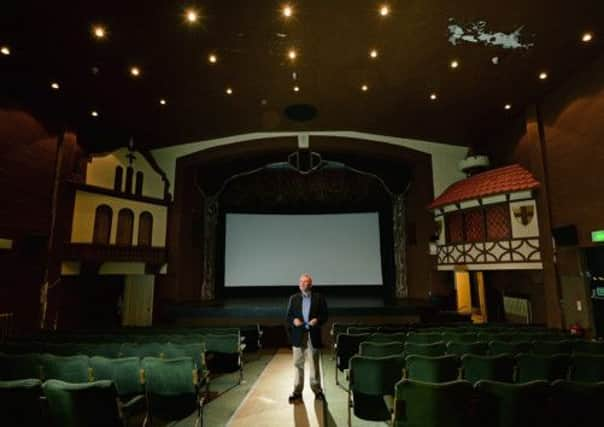Campbeltown cinema celebrates 100 years of films


Now, the Campbeltown community is preparing to celebrate a special anniversary of its beloved silver screen, and redouble their efforts to preserve it for future generations.
This weekend, the remote Argyll town will stage a special screening at its historic Picture House, Scotland’s oldest continually working cinema, which will mark a century since the first audience graced its beguiling Art Deco interior.
Advertisement
Hide AdThe gala evening, featuring a screening of Baz Luhrmann’s adaptation of The Great Gatsby, will begin with a recital by Scotland’s Machar, Liz Lochhead, and end with a fireworks display on the town’s waterfront.
Among those in attendance will be longstanding supporters of a project to refurbish the A-listed building to its former glory. Those behind the initiative are hoping to meet a multimillion pound target to bring the cinema up to scratch for the 21st century, while maintaining its period charms.
When it opened on 26 May 1913 with a screening of a silent version of Les Misérables projected onto the back wall, the cinema - known fondly by locals as the Wee Picture House - meant that locals no longer required to make a gruelling journey to Glasgow to see the latest films.
A roaring success, it showed the newest exports from Hollywood, the reels for which were ferried to Campbeltown by sea. Come 1931, sound equipment was installed, further broadening the horizons of the town’s film aficionados.
As time wore on, however, the cinema’s fortunes flagged. The advent of the 1960s saw it forced to share the bill with bingo players, and although it has benefited from the patronage of famous names like Sir Paul McCartney, it seemed the credits were set to roll for a final time as the dawn of the multiplex era emerged in the late 1980s.
Fortunately, a hastily formed charitable trust, Campbeltown Community Business, provided an encore, and it has been tending the Picture House’s flame for close to a quarter of a century. Today, it screens big-name films such as Iron Man 3, Oblivion, and Olympus Has Fallen, but faced with an uncertain future, plans are afoot to raise £2.5m to continue its proud legacy.
Advertisement
Hide AdJane Mayo, chair of the charitable trust, told The Scotsman: “The Picture House is very, very precious and it’s becoming even more so as the years go by and our history is lost. We still have the wonderful balcony and stalls that were built a century ago.
“It’s terribly important as a social space because the nearest cinema is 90 miles away in Oban. At a time when there’s not a great deal for families to do things together, it’s vital.”
Advertisement
Hide AdLast year, Campbeltown Community Business, received a £450,000 grant from Historic Scotland towards its Centenary Project. While an application for £1m in funding from the Heritage Lottery Fund faltered earlier this year, those charged with preserving the community hub are in the process of submitting a fresh application.
If realised, the initiative will mesh the old and the new, refurbishing the cinema’s interior while ensuring that, behind the scenes, the latest technology is installed to allow audiences to enjoy live broadcasts of opera, theatre, and ballet productions, as well as films. A second screen could be installed along with a gallery space for exhibitions.
Already, change is taking place. In February, the cinema finally made the switch from 35mm projection to digital, although the old equipment has been safely stored away in the hope of teaching young projectionists the traditional skills of their craft.
Ms Mayo added: “Currently, it isn’t a viable commercial prospect because the costs are so expensive, but we hope that having gone digital, and refurbishing the cinema, there will be another 100 years to come.
“Being with other people and experiencing the atmosphere of a film is unique. People cheer and clap together, and it heightens the senses. But if you’re watching it at home, the phone can ring, or someone can knock the door, and the magic is broken.”